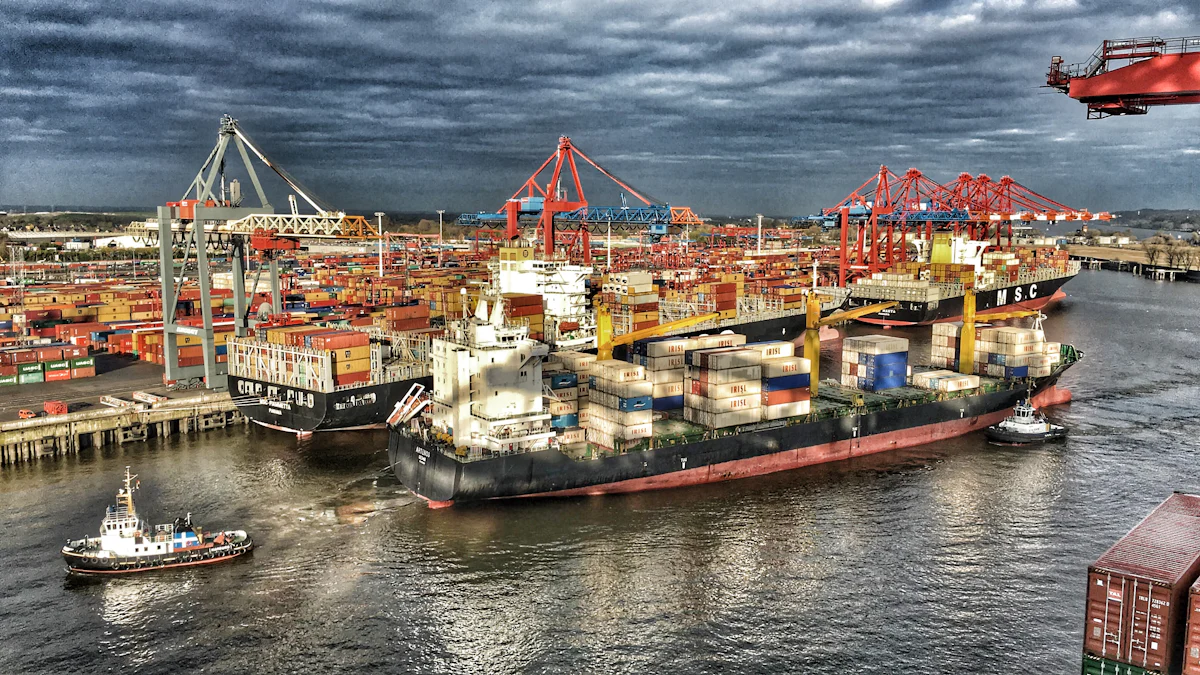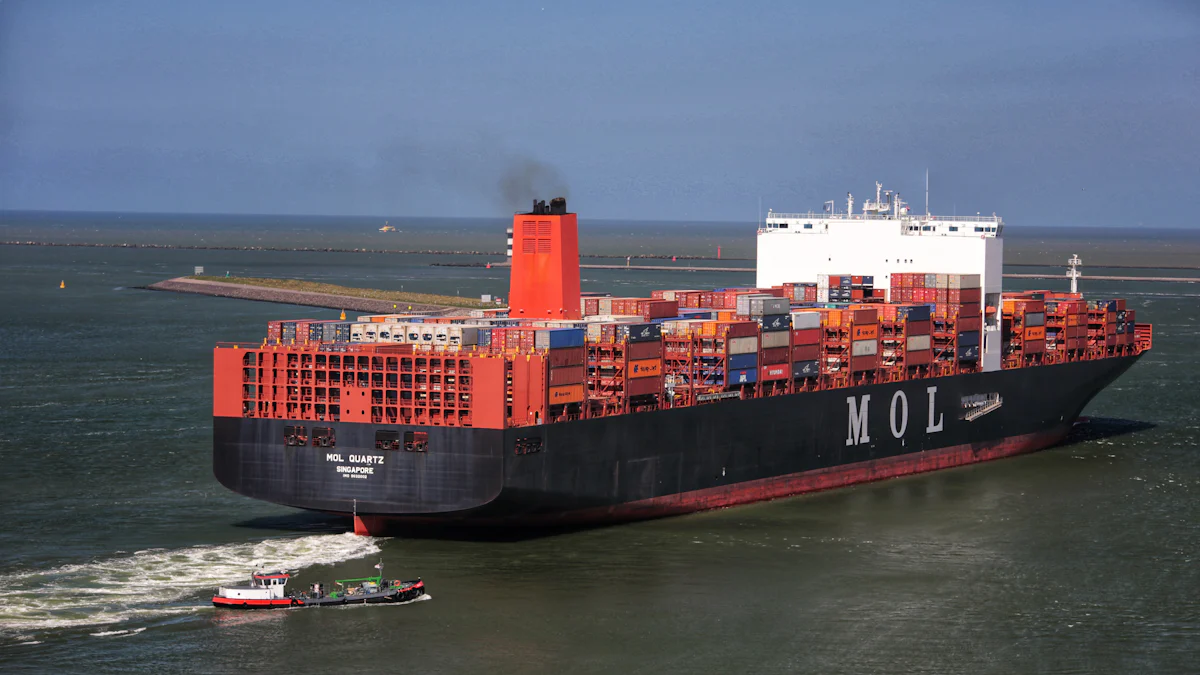Expert Insights on Ocean Freight Market Shifts

The ocean freight market update reveals that it has undergone significant shifts, driven by various factors. Economic uncertainties and geopolitical tensions have played a pivotal role in altering demand and freight rates. For instance, shipping prices between China and Los Angeles surged by 500% year-over-year in September 2021, only to plummet in May 2023. These fluctuations impact industry stakeholders, including manufacturers and logistics providers, who must adapt to changing conditions. The market's projected growth, with a compound annual growth rate of over 4% from 2024 to 2032, underscores the importance of staying informed about these dynamics.
Demand Factors in Ocean Freight

Importance of Data in Understanding Demand
Accurate data plays a crucial role in understanding the dynamics of the ocean freight market. Stakeholders rely on data to make informed decisions and anticipate market shifts. However, challenges in data reliability often arise.
Challenges in Data Reliability
Data reliability remains a significant concern for industry stakeholders. Inconsistent data sources and varying methodologies can lead to discrepancies. Companies must invest in robust data collection and analysis systems to ensure accuracy. This investment will help them navigate the complexities of the ocean freight market update.
Role of Economic Indicators
Economic indicators provide valuable insights into market demand. Indicators such as GDP growth, consumer spending, and industrial production influence freight volumes. By monitoring these indicators, companies can better predict demand fluctuations and adjust their strategies accordingly.
Consumer Behavior and Market Trends
Consumer behavior significantly impacts the ocean freight market. Understanding these trends helps companies align their operations with market demands.
Impact of E-commerce Growth
The rise of e-commerce has transformed the ocean freight market. As online shopping becomes more prevalent, the demand for shipping services increases. The World Trade Organization estimates that 43 billion tons of goods are shipped annually, partly due to this trend. Companies must adapt to the growing need for efficient and timely deliveries.
Changes in Consumer Preferences
Consumer preferences continue to evolve, influencing market trends. A shift towards sustainable and locally sourced products affects shipping patterns. Companies must remain agile and responsive to these changes to maintain competitiveness in the ocean freight market update.
Supply Factors Affecting Freight Rates
Challenges in Obtaining Precise Supply Data
Accurate supply data is crucial for understanding the ocean freight market. However, obtaining precise data presents significant challenges. Fleet capacity and utilization are key factors that influence freight rates.
Fleet Capacity and Utilization
Fleet capacity directly impacts freight rates. When fleet capacity increases, it can lead to lower freight rates due to higher availability of shipping options. Conversely, limited fleet capacity can drive rates up. Utilization rates also play a critical role. High utilization indicates that most ships are in use, which can lead to increased rates as demand outpaces supply. Monitoring these factors helps stakeholders anticipate changes in the ocean freight market update.
Port Congestion and Infrastructure
Port congestion significantly affects freight rates. Congested ports lead to delays, increasing shipping costs. Infrastructure limitations exacerbate these issues, as ports struggle to handle large volumes of cargo efficiently. Investments in port infrastructure can alleviate congestion, but such improvements take time. Stakeholders must consider these factors when planning logistics operations.
Role of Indices like SCFI
Indices such as the Shanghai Containerized Freight Index (SCFI) provide valuable insights into market conditions. They offer a snapshot of current freight rates and trends.
How SCFI Reflects Market Conditions
The SCFI reflects market conditions by tracking spot rates for container shipping. It provides a benchmark for freight rates on major trade routes. By analyzing SCFI data, stakeholders can gauge the health of the ocean freight market. This information aids in making informed decisions about shipping strategies.
Limitations of Freight Indices
While indices like SCFI offer valuable insights, they have limitations. They primarily focus on spot rates, which can fluctuate rapidly. Long-term contracts and other factors may not be fully represented. Therefore, stakeholders should use indices as one of several tools to understand the ocean freight market update comprehensively.
Global Issues Impacting Ocean Freight

Geopolitical Conflicts
Geopolitical conflicts significantly impact the ocean freight market. These conflicts often lead to disruptions in trade routes and increased shipping costs.
Trade Wars and Tariffs
Trade wars and tariffs create uncertainty in the ocean freight market. They alter trade flows and affect shipping demand. For instance, recent trade tensions between major economies have led to shifts in shipping routes. Companies must navigate these changes to maintain efficient operations. The imposition of tariffs can increase costs for shippers, affecting their bottom line. Businesses need to stay informed about trade policies to adapt their strategies accordingly.
Political Instability in Key Regions
Political instability in key regions poses challenges for the ocean freight market. Conflicts in areas like the Red Sea can disrupt global supply chains. The Red Sea crisis, for example, has driven up freight costs and caused delays. Companies must monitor political developments to anticipate potential disruptions. By understanding these dynamics, businesses can better prepare for changes in shipping conditions.
Climate Change and Environmental Regulations
Climate change and environmental regulations play a crucial role in shaping the ocean freight market. Companies must adopt sustainable practices to comply with new regulations.
Impact on Shipping Routes
Climate change affects shipping routes by altering weather patterns and sea levels. These changes can lead to longer transit times and increased fuel consumption. Companies must adjust their routes to minimize environmental impact. By adopting more efficient routing, businesses can reduce their carbon footprint and improve sustainability.
Compliance Costs for Shipping Companies
Compliance with environmental regulations incurs costs for shipping companies. New policies require investments in greener technologies and practices. Companies must balance these costs with the need to remain competitive. By embracing eco-friendly solutions, businesses can enhance their reputation and meet sustainability goals. The focus on reducing emissions will drive the adoption of innovative technologies in the industry.
Seasonality and Its Effects on the Market
Seasonal Patterns in Shipping
Peak Seasons and Off-Peak Periods
The ocean freight market experiences distinct seasonal patterns that influence shipping activities. During peak seasons, demand for shipping services surges, often driven by increased consumer spending and inventory restocking. Retailers prepare for major shopping events like Black Friday and Christmas, leading to heightened shipping volumes. This surge can result in higher freight rates as carriers adjust to meet the increased demand. Conversely, off-peak periods witness a decline in shipping activities, offering opportunities for cost savings. Companies strategically plan shipments during these times to optimize logistics expenses.
Influence of Agricultural Cycles
Agricultural cycles significantly impact the ocean freight market. The harvest season for various crops dictates shipping schedules, as agricultural products require timely transportation to global markets. For instance, the export of grains from North America peaks during the fall harvest, affecting shipping routes and capacity. Similarly, the citrus harvest in the Mediterranean region influences shipping patterns. Understanding these cycles allows stakeholders to anticipate fluctuations in demand and adjust their logistics strategies accordingly.
Impact of Holidays and Festivals
Increased Demand During Major Holidays
Major holidays and festivals create spikes in shipping demand. Events like Chinese New Year and Diwali lead to increased consumer purchases, driving up the need for shipping services. Companies must prepare for these periods by ensuring adequate capacity and efficient logistics operations. The anticipation of holiday demand often results in pre-booking of shipping slots, which can affect freight rates and availability. Businesses that effectively manage these peaks can capitalize on the heightened demand and enhance customer satisfaction.
Shipping Delays Due to Holiday Closures
Holiday closures can cause significant shipping delays. Ports and customs offices may operate on reduced schedules during festive periods, leading to backlogs and extended transit times. For example, the Golden Week holiday in China results in temporary shutdowns, impacting global supply chains. Companies must account for these closures in their planning to avoid disruptions. By proactively adjusting shipping schedules and communicating with partners, businesses can mitigate the effects of holiday-related delays and maintain smooth operations.
The blog has explored the dynamic shifts in the ocean freight market update, highlighting key factors such as demand fluctuations, supply challenges, and global issues. Real-time data analysis emerges as a crucial tool for predicting these market shifts. By leveraging technological advancements like AI and big data, industry professionals can enhance decision-making and optimize supply chain operations. These technical approaches not only improve prediction accuracy but also empower stakeholders to navigate the complexities of the ocean freight market with greater agility and resilience.
See Also
Understanding Current Trends In Logistics Risk Management
Exploring Innovations In Sea Freight Logistics For 2024
A Detailed Look At The Future Of LTL Freight
Transforming Industries With Cloud-Based Supply Chain Solutions
Managing Supply Chain Challenges Amid Inflationary Pressures
